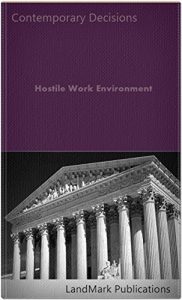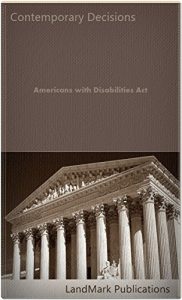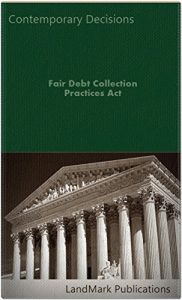THIS CASEBOOK contains a selection of 47 U. S. Court of Appeals decisions that analyze, interpret and apply issues surrounding market power and monopoly in antitrust law. The selection of decisions spans from 2006 to the date of publication.
As a general rule, Section 1 of the Sherman Act does not apply to single entities. Am. Needle, Inc. v. Nat'l Football League, 560 U.S. 183, 190, 130 S. Ct. 2201, 2207 (2010). The "key", according to the Supreme Court, is whether the "contract, combination . . ., or conspiracy" joins together "separate decisionmakers," i.e., "separate economic actors pursuing separate economic interests." Am. Needle, 560 U.S. at 195, 130 S. Ct. at 2205. If so, then the agreement may "deprive[] the marketplace of independent centers of decisionmaking[.]" Id. at 195, 2212. Abraham & Veneklasen Joint Venture v. American Quarter Horse Association, (5th Cir. 2015)
"A violation of section 2 of the Sherman Act is made out when it is shown that the asserted violator 1) possesses monopoly power in the relevant market and 2) acquired or maintained that power willfully, as distinguished from the power having arisen and continued by growth produced by the development of a superior product, business acumen, or historic accident." Stearns Airport Equip. Co. v. FMC Corp., 170 F.3d 518, 522 (5th Cir. 1999). Having or acquiring a monopoly is not in and of itself illegal. The illegal abuse of power occurs when the monopolist exercises its power to control prices or exclude competitors from the relevant market for its products. See, e.g., United States v. E.I. DuPont de Nemours, 351 U.S. 377, 391-94, 76 S. Ct. 994, 1005-06 (1956) (discussing Section 2 illegal monopoly power in terms of the potential competitors for the monopolist's product). Abraham & Veneklasen Joint Venture v. American Quarter Horse Association, ibid.
"Monopoly power is the power to control prices or exclude competition." United States v. E.I. du Pont de Nemours & Co., 351 U.S. 377, 391, 76 S.Ct. 994, 100 L.Ed. 1264 (1956). A defendant possesses monopoly power in the relevant market if it is "truly predominant in the market." White Bag Co. v. Int'l Paper Co., 579 F.2d 1384, 1387 (4th Cir.1974). Although there is no fixed percentage market share that conclusively resolves whether monopoly power exists, the Supreme Court has never found a party with less than 75% market share to have monopoly power. Antitrust Laws & Trade Regulation: Desk Ed. § 3.02[2][c][ii]. "[W]hen monopolization has been found the defendant controlled seventy to one hundred percent of the relevant market." DuPont I, 637 F.3d at 450 (quoting White Bag, 579 F.2d at 1387). Kolon Industries v. EI DuPont de Nemours & Co., 748 F. 3d 160 (4th Cir. 2014).
. . .
As a general rule, Section 1 of the Sherman Act does not apply to single entities. Am. Needle, Inc. v. Nat'l Football League, 560 U.S. 183, 190, 130 S. Ct. 2201, 2207 (2010). The "key", according to the Supreme Court, is whether the "contract, combination . . ., or conspiracy" joins together "separate decisionmakers," i.e., "separate economic actors pursuing separate economic interests." Am. Needle, 560 U.S. at 195, 130 S. Ct. at 2205. If so, then the agreement may "deprive[] the marketplace of independent centers of decisionmaking[.]" Id. at 195, 2212. Abraham & Veneklasen Joint Venture v. American Quarter Horse Association, (5th Cir. 2015)
"A violation of section 2 of the Sherman Act is made out when it is shown that the asserted violator 1) possesses monopoly power in the relevant market and 2) acquired or maintained that power willfully, as distinguished from the power having arisen and continued by growth produced by the development of a superior product, business acumen, or historic accident." Stearns Airport Equip. Co. v. FMC Corp., 170 F.3d 518, 522 (5th Cir. 1999). Having or acquiring a monopoly is not in and of itself illegal. The illegal abuse of power occurs when the monopolist exercises its power to control prices or exclude competitors from the relevant market for its products. See, e.g., United States v. E.I. DuPont de Nemours, 351 U.S. 377, 391-94, 76 S. Ct. 994, 1005-06 (1956) (discussing Section 2 illegal monopoly power in terms of the potential competitors for the monopolist's product). Abraham & Veneklasen Joint Venture v. American Quarter Horse Association, ibid.
"Monopoly power is the power to control prices or exclude competition." United States v. E.I. du Pont de Nemours & Co., 351 U.S. 377, 391, 76 S.Ct. 994, 100 L.Ed. 1264 (1956). A defendant possesses monopoly power in the relevant market if it is "truly predominant in the market." White Bag Co. v. Int'l Paper Co., 579 F.2d 1384, 1387 (4th Cir.1974). Although there is no fixed percentage market share that conclusively resolves whether monopoly power exists, the Supreme Court has never found a party with less than 75% market share to have monopoly power. Antitrust Laws & Trade Regulation: Desk Ed. § 3.02[2][c][ii]. "[W]hen monopolization has been found the defendant controlled seventy to one hundred percent of the relevant market." DuPont I, 637 F.3d at 450 (quoting White Bag, 579 F.2d at 1387). Kolon Industries v. EI DuPont de Nemours & Co., 748 F. 3d 160 (4th Cir. 2014).
. . .












